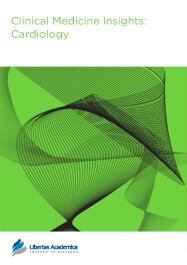

Publication Date: 04 Apr 2013
Type: Review
Journal: Clinical Medicine Insights: Cardiology
Citation: Clinical Medicine Insights: Cardiology 2013:7 59-86
doi: 10.4137/CMC.S10225

This study is the first systematic review of risk factors for stroke in China and supports the importance of current public health initiatives to manage the risk factors appropriately to reduce risk of stroke in high risk patients. Additionally, this study has been co-authored by prominent Chinese and US physicians and researchers with expertise in cardiovascular disease, neurologic disorders, epidemiology, and real world data. While there have been several systematic reviews of real world associations of risk factors for coronary artery disease, none focus specifically on the population of China, where there is growing evidence that such risk factors are poorly treated or uncontrolled, especially in rural areas.
Background: To better understand the impact of traditional cardiovascular risk factors on risk of coronary artery disease (CAD) in China, a systematic review of all Chinese observational studies published in either English or Chinese in MEDLINE and EMBASE over the last 5 years was performed and the association between any of 5 traditional risk factors (ie, hypertension, diabetes, elevated lipid levels, obesity, and smoking) and the risk of CAD was studied.
Methods and results: The study found a consistent relationship between lipid levels and CAD. Higher low-density lipoprotein cholesterol values were associated with greater risk of CAD, with an odds ratio as high as 3.31. Other factors found to be significant contributors to the risk of CAD included hypertension (crude odds ratio range of 1.40–5.11), diabetes (1.50–5.97), and smoking (1.37–5.19). An association between obesity and CAD in China was observed, but the evidence supporting this was considered weak due to the paucity of studies found as part of this review.
Conclusions: This review provides a systematic summary of CAD risk factors in China and demonstrates the important differences that exist in CAD risk factors between countries and regions. Approaches to reduce CAD globally must take into account the unique risk factors that drive CAD in each country and region as is demonstrated by these findings.
PDF (797.89 KB PDF FORMAT)
RIS citation (ENDNOTE, REFERENCE MANAGER, PROCITE, REFWORKS)
BibTex citation (BIBDESK, LATEX)
XML
PMC HTML

I am impressed by the efficiency at each step of submission in the journal. Based on the first-hand experience, I am confident that this journal will have a great future, and the impact factor will rise rapidly.

All authors are surveyed after their articles are published. Authors are asked to rate their experience in a variety of areas, and their responses help us to monitor our performance. Presented here are their responses in some key areas. No 'poor' or 'very poor' responses were received; these are represented in the 'other' category.See Our Results
Copyright © 2014 Libertas Academica Ltd (except open access articles and accompanying metadata and supplementary files.)
Facebook Google+ Twitter
Pinterest Tumblr YouTube